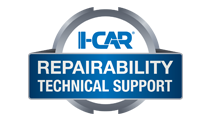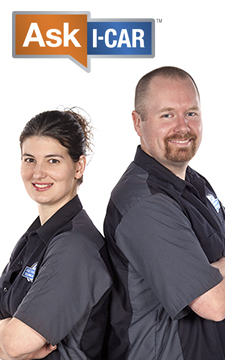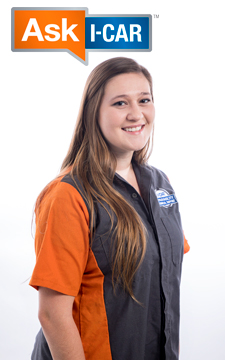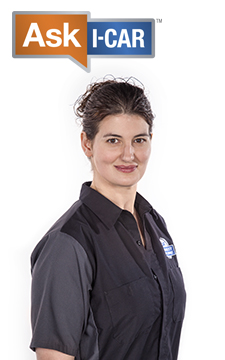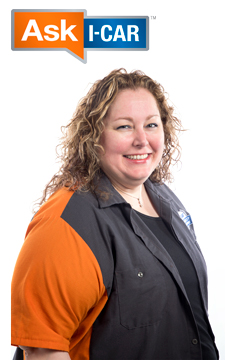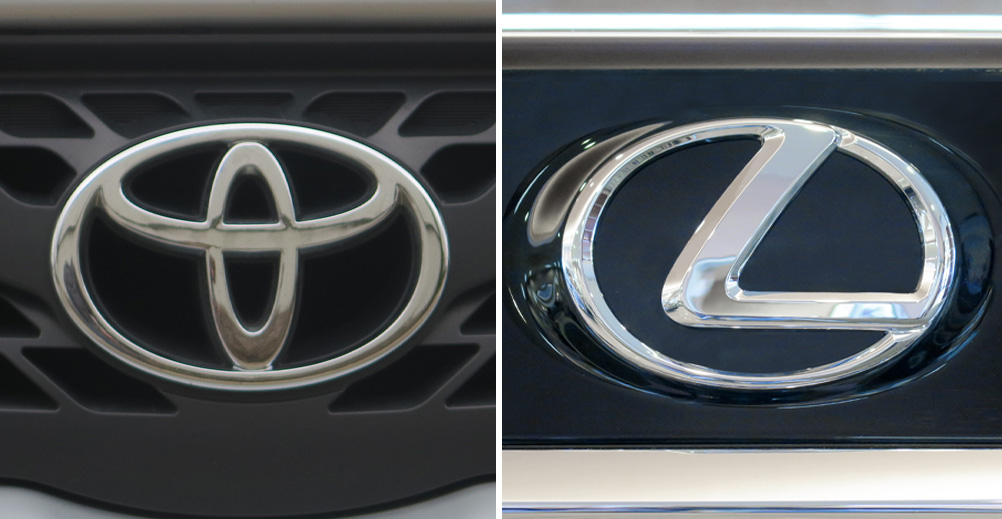
Repairing Blind Spot Sensor Mounting Locations: Toyota/Lexus
- Posted on 10 September 2019
As part of the research conducted by the I-CAR RTS team for the OEM Calibration Requirements Search, we have found that some OEMs provide measurements for blind spot sensor mounting locations. When this mounting location information is found, we will publish articles highlighting the information and where to locate it for that specific OEM.
When performing repairs, having measurements is a way to ensure the vehicle is repaired correctly. However, measurements are not always given for body panels. This typically isn’t a problem, until there are advanced driver assistance systems (ADAS) involved, such as blind spot sensors. When mounting blind spot sensors on body panels, it can be crucial to have the mounting location straightened to the correct measurement. Some OEMs not only give measurements but may also provide alternative measuring methods to identify that the sensor is looking in the right direction. Let's see what Toyota/Lexus has to say.
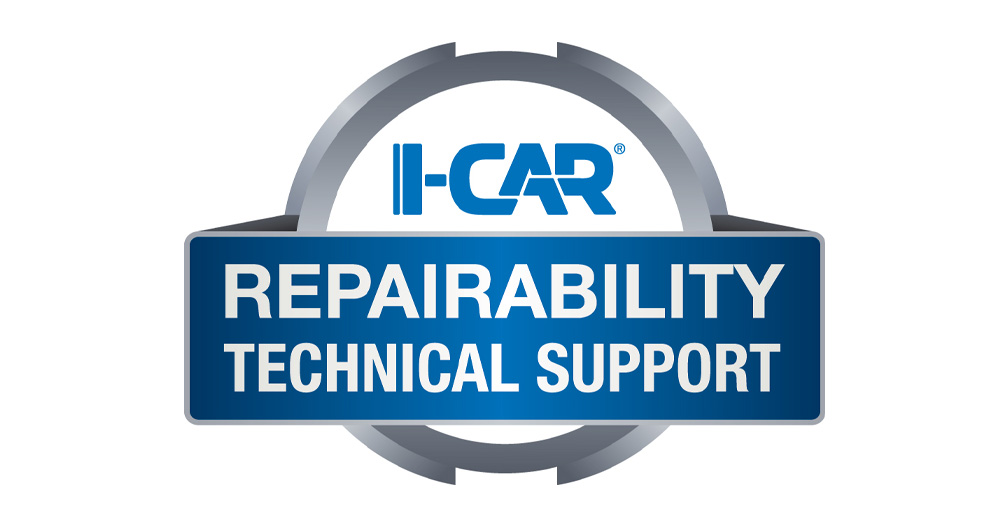
OEM Calibration Requirements Search: Updated For 2019
- Posted on 09 September 2019
Since its unveiling, the OEM Calibration Requirements Search has become a go to source for calibration requirements research for many in the industry. Due to ever changing OEM information the search function is constantly being updated. In addition, every year the current model year information needs to be researched and added to the RTS Portal.

OEM Partial Part Replacement Search: Updated For 2019
- Posted on 06 September 2019
The OEM Partial Part Replacement Search page is a simple way to find out if an OEM has a published procedure available for sectioning or partial part replacement at factory seams. The RTS Team has been researching OEM repair manuals to compile data to keep this search function up-to-date.
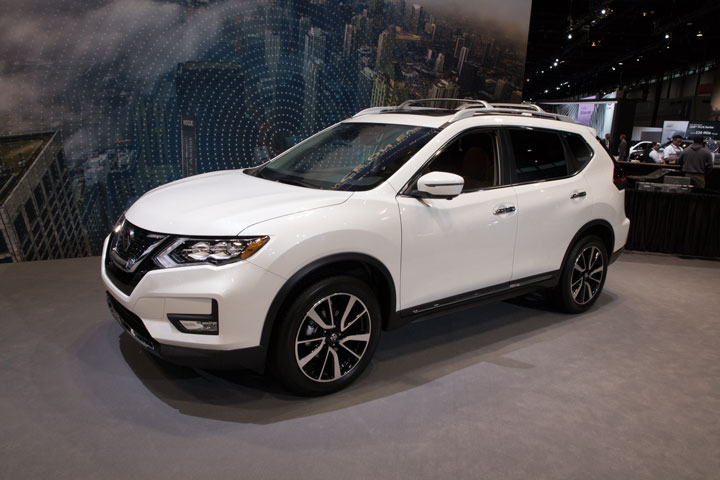
Nissan Rogue vs. Rogue Sport - Not Just A Different Trim Package
- Posted on 05 September 2019
At first glance, the Nissan Rogue and Rogue Sport may seem like they are the same vehicle with a different trim package. However, the vehicle structure, body repair manuals (BRM), parts, and procedures are completely different from each other. This is why it is important to make sure the correct manual is selected for repairs.

Repairer Driven News: Honda To Roll Out New Airbags In 2020
- Posted on 04 September 2019
You may be seeing a new airbag in the not so distant future according to Honda. This passenger front airbag is a new design that is intended to “catch” the passenger, similar to how a baseball glove catches a ball. The airbag features three chambers instead of the traditional one chamber airbag.
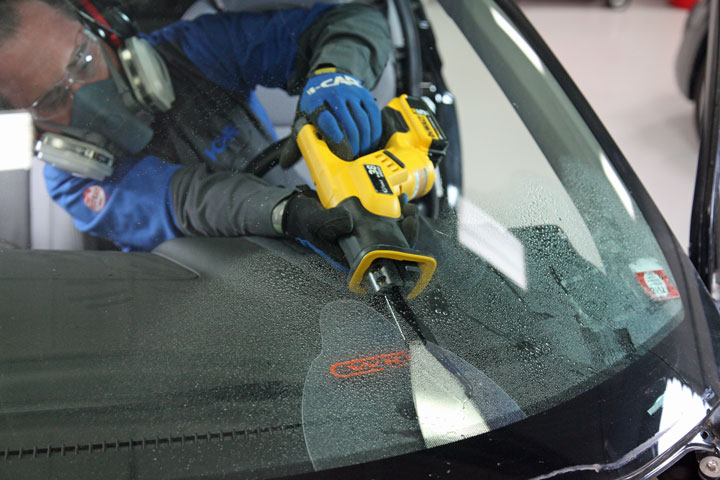
OEM Glass Replacement Page: UPDATE
- Posted on 03 September 2019
The I-CAR RTS OEM Glass Replacement page has gathered information from vehicle makers on stationary glass replacement and approved products for their vehicles into one location to help ensure complete, safe, and quality repairs.
Since the launch in 2017, there have been some significant changes in vehicle systems that impact windshield replacement procedures.

Repairer Driven News: Rear Seat Reminder Technology Continues To Grow
- Posted on 30 August 2019
Systems that can remind the drivers that they may have a child or pet in the back seat of the vehicle have been around since 2016. Since the original systems have been introduced, more OEMs have been following suit in an effort to eliminate children and pets being left in hot vehicles.
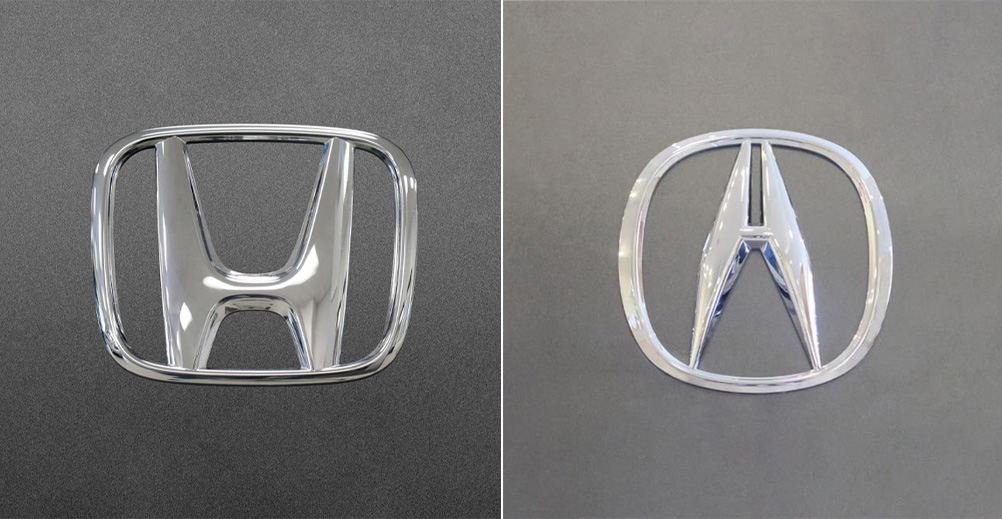
Repairing Blind Spot Sensor Mounting Locations: Honda/Acura
- Posted on 29 August 2019
As part of the research conducted by the I-CAR RTS team for the OEM Calibration Requirements Search, we have found that some OEMs provide measurements for blind spot sensor mounting locations. When this mounting location information is found, we will publish articles highlighting the information and where to locate it for that specific OEM.
When performing repairs, having measurements is a way to ensure the vehicle is repaired correctly. However, measurements are not always given for body panels. This typically isn’t a problem, until there are advanced driver assistance systems (ADAS) involved, such as blind spot sensors. When mounting blind spot sensors on body panels, it can be crucial to have the mounting location straightened to the correct measurement. Some OEMs not only give measurements but may also provide alternative measuring methods to identify that the sensor is looking in the right direction. Let's see what Honda/Acura has to say.
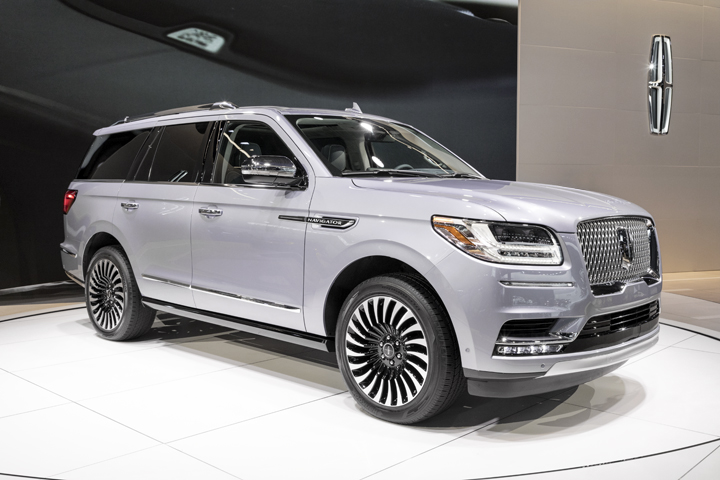
Sectioning And Partial Part Replacement: 2019 Lincoln Navigator
- Posted on 28 August 2019
One of the top technical inquiries received at Ask I-CAR is “Is there a sectioning or partial replacement procedure available?” To help answer this question, RTS has an OEM Partial Part Replacement Search available. Here you will find information on if these procedures are available on a specific vehicle. Let’s take a closer look at the 2019 Lincoln Navigator.
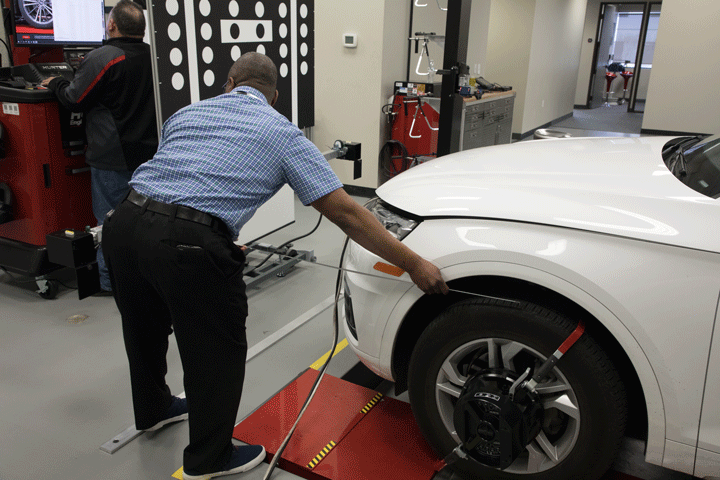
Preparing The Vehicle For Calibration
- Posted on 27 August 2019
Calibration of advanced driver assistance systems (ADAS) is a somewhat sensitive procedure. The cameras and sensors used are highly technical and can be mis-calibrated if all requirements are not met before calibration is performed. It’s important to carefully read the calibration procedure to make sure that the vehicle meets all of the requirements before starting.

Back-To-Basics: Preventing Wind Noise And Water Leaks
- Posted on 26 August 2019
Sometimes, going back to the basics can make the difference between a quality repair and a failed repair. When it comes to preventing wind noise and water leaks during the repair process, there are a few things to keep in mind.
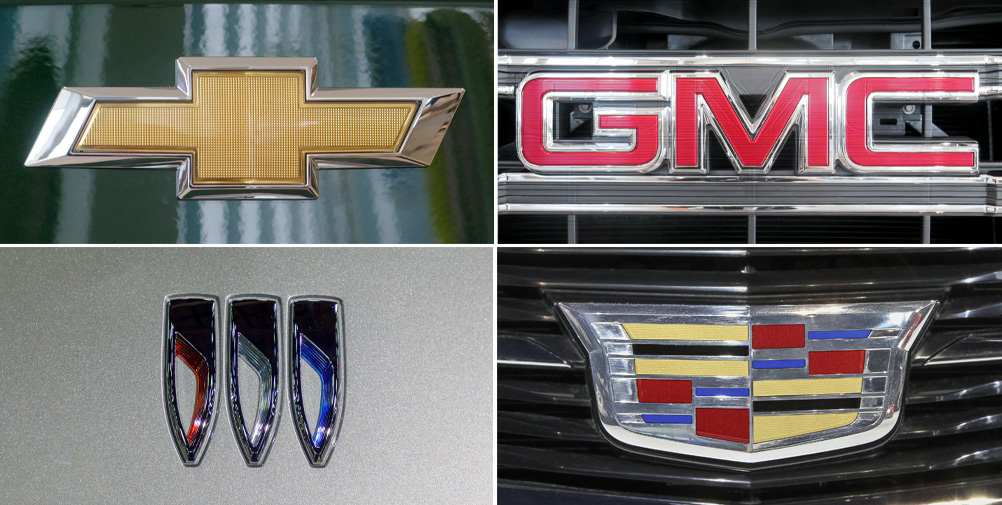
General Motors Waterproof Rivets: UPDATE
- Posted on 23 August 2019
On the 2017 and newer Chevrolet Cruze, if you read through some of the procedures, like the Rear Wheelhouse Panel Replacement procedure, you may find yourself asking, “What is the waterproof rivet B1 referenced in the installation procedure?” Let’s find out.
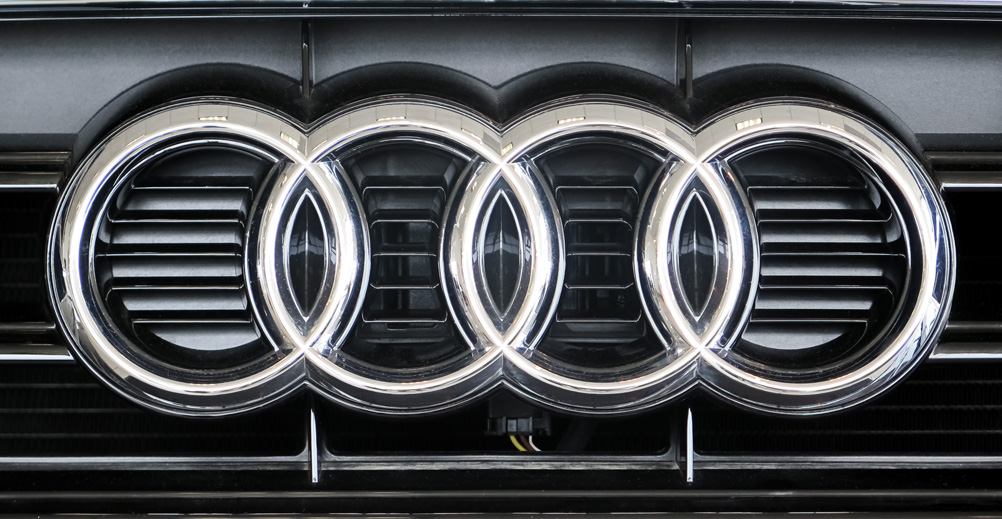
Corrosion Protection Guidelines: Audi
- Posted on 22 August 2019
A key factor in collision repair is making long-lasting repairs. When a vehicle is repaired, many areas of corrosion protection are disturbed. This creates corrosion hot spots that left untreated will lead to corrosion and potentially a repair failure. However, there are certain precautions that can be taken to safely and properly restore the corrosion protection throughout the repair process. OEMs often give specifications on restoring corrosion protection. These specifications generally include seam sealer, adhesives, foam fillers, and cavity waxes. Let’s take a look at what Audi says.
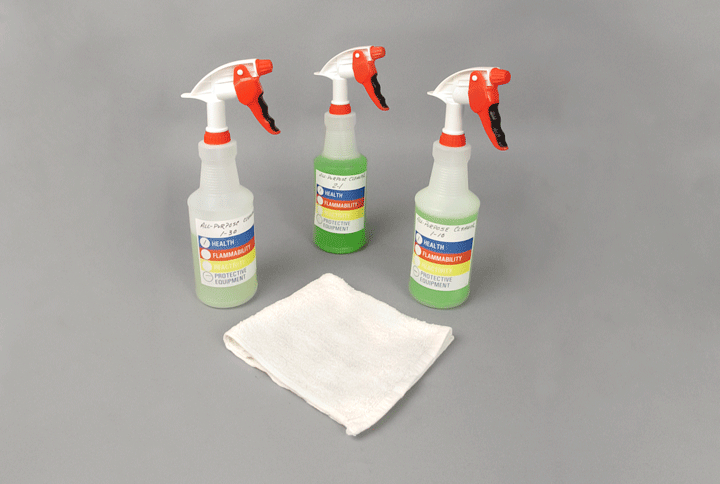
Back-To-Basics: Labeling Materials
- Posted on 21 August 2019
Sometimes, going back to the basics can make the difference between a quality repair and a failed repair. There are a few important points to keep in mind when using and labeling materials during the repair process.

Repairer Driven News: FCA/Stellantis Window Repair Tips For Jeep And RAM
- Posted on 20 August 2019
Repairer Driven News (RDN) released an article pertaining to repair procedures for three popular FCA/Stellantis vehicles. Technicians may want to take note of these tips for the panoramic sunroof of the 2019 RAM 1500, and stationary window repair on the 2018 Jeep Wrangler and 2020 Jeep Gladiator.
-
Toyota/Lexus/Scion Position Statement: Pre- and Post-Repair System Scanning
Thursday, 28 July 2016
As the industry continues to ask if pre- and post-repair system scanning is necessary, Toyota/Lexus/Scion provides their answer.
-
Pre- and Post-Repair System Scanning Statements
Wednesday, 9 January 2019
Are you wondering if a particular OEM or organization has a published statement on pre-repair and post-repair scanning? We have compiled a list of most of the statements on the subject, so you can...
-
ADAS, Calibration, And Scanning Article Hotspot
Monday, 14 January 2019
Since advanced driver assistance systems (ADAS), scanning, and calibration first started becoming relevant, members of the collision repair industry have required as much knowledge as possible on...
-
Honda/Acura Position Statement: Pre- and Post-Repair System Scanning - UPDATE
Wednesday, 22 May 2019
Honda /Acura has updated their position statement on pre- and post-repair scanning to give more clarification on what is expected for scanning.
-
BMW Position Statement: Pre- and Post-Repair System Scanning - UPDATE
Friday, 10 April 2020
BMW has released a position statement related to pre- and post-repair system scanning. The statement applies to All vehicles equipped with on board diagnostics II (OBD II).
-
Quickly Identifying Outer Quarter Panels w/Rolled Hem Flanges
Monday, 5 March 2018
The I-CAR best practice article, Recycled Outer Quarter Panels w/Rolled Hem Flanges has gotten a lot of interest from the collision repair industry. It’s important to know which vehicles are...
-
General Motors Position Statement: Pre- and Post-Repair System Scanning
Friday, 21 October 2016
As the industry continues to ask, are pre- and post-repair scans necessary, General Motors provides their answer.
-
Restraints Wiring Repairs
Monday, 23 May 2016
Over the past few months, we've been sharing OEM position statements on restraints wiring repairs. Now we're bringing them all together in one place for easy reference.
-
FCA/Stellantis Position Statement: Pre- and Post-Repair System Scanning
Thursday, 9 June 2016
FCA/Stellantis has released a position statement related to pre- and post-repair system scanning.
-
Typical Calibration Requirements For Forward Radar Sensors
Wednesday, 12 October 2016
Technicians should be aware of what’s required to keep advanced driver assistance systems (ADAS) running safely after a collision. Whether that be aiming a camera, which can cause a system to not...
-
Structural Sectioning Procedures: Ford/Lincoln - UPDATE
Friday, 19 December 2025
Ask I-CAR receives many technical inquiries referring to sectioning. The collision repair industry wants to know where can you section, does the OEM have a sectioning procedure, and where can I find the...
-
Body Repair Manual Symbols: Hyundai
Wednesday, 17 December 2025
While looking at repair procedures in a body repair manual (BRM) you may notice that symbols are used to indicate specific operations or parts to be used during the repair process. Most BRMs provide a...
-
Body Repair Manual Symbols: Genesis
Wednesday, 17 December 2025
While looking at repair procedures in a body repair manual (BRM) you may notice that symbols are used to indicate specific operations or parts to be used during the repair process. Most BRMs provide a...
-
App-Based Connected Services Considerations: BMW
Wednesday, 10 December 2025
Have you had an experience where the vehicle notified the owner that it was being moved while it was in your repair facility? App-based connected services are available from many vehicle makers and...
-
Digital Key Considerations: BMW
Wednesday, 10 December 2025
The intermingling of technology and automobiles continues, with digital key offerings from most vehicle makers. Digital keys utilize smartphone technology to expand vehicle access and owner...
-
Mercedes-Benz Vehicles On The RTS OEM Calibration Requirements Search
Thursday, 4 December 2025
Mercedes-Benz models are now listed in the OEM Calibration Requirements Search page on the RTS website. You're going to notice a difference between other vehicle search results and Mercedes-Benz...
-
I-CAR Repairers Realm - New In 2026: Mixed Attachment Methods And Steel Sectioning Recertification - Now Available
Monday, 1 December 2025
I-CAR had a discussion on the new Mixed Attachment Methods course launching in 2026.
-
Repairer Driven News: SCRS OEM Collision Repair Technology Summit Sessions
Monday, 1 December 2025
Repairer Driven News published three articles highlighting safety inspection topics that took place during the Collision Repair Specialists (SCRS) OEM Collision Repair Technology Summit at the 2025...
-
I-CAR Audi Collision Repair And Electromechanical Repair Overview Courses
Tuesday, 25 November 2025
I-CAR has developed courses that provide an overview of collision repair and electromechanical repair for current Audi vehicles.
-
SEMA 2025: Ford/Lincoln Presentations
Monday, 24 November 2025
I-CAR had numerous presentations at the 2025 SEMA show. Ford/Lincoln delivered two presentations.
- 2025
- December 2025 (8)
- November 2025 (11)
- October 2025 (13)
- September 2025 (11)
- August 2025 (12)
- July 2025 (11)
- June 2025 (11)
- May 2025 (11)
- April 2025 (13)
- March 2025 (12)
- February 2025 (11)
- January 2025 (12)
- 2024
- December 2024 (8)
- November 2024 (10)
- October 2024 (13)
- September 2024 (10)
- August 2024 (12)
- July 2024 (11)
- June 2024 (9)
- May 2024 (13)
- April 2024 (12)
- March 2024 (12)
- February 2024 (12)
- January 2024 (9)
- 2023
- December 2023 (8)
- November 2023 (12)
- October 2023 (11)
- September 2023 (11)
- August 2023 (12)
- July 2023 (9)
- June 2023 (11)
- May 2023 (12)
- April 2023 (11)
- March 2023 (12)
- February 2023 (10)
- January 2023 (11)
- 2022
- December 2022 (11)
- November 2022 (12)
- October 2022 (11)
- September 2022 (13)
- August 2022 (11)
- July 2022 (10)
- June 2022 (13)
- May 2022 (11)
- April 2022 (12)
- March 2022 (10)
- February 2022 (11)
- January 2022 (13)
- 2021
- December 2021 (13)
- November 2021 (11)
- October 2021 (13)
- September 2021 (14)
- August 2021 (12)
- July 2021 (15)
- June 2021 (17)
- May 2021 (11)
- April 2021 (14)
- March 2021 (20)
- February 2021 (14)
- January 2021 (14)
- 2020
- December 2020 (13)
- November 2020 (17)
- October 2020 (12)
- September 2020 (14)
- August 2020 (11)
- July 2020 (18)
- June 2020 (14)
- May 2020 (14)
- April 2020 (19)
- March 2020 (12)
- February 2020 (13)
- January 2020 (14)
- 2019
- December 2019 (13)
- November 2019 (19)
- October 2019 (25)
- September 2019 (20)
- August 2019 (22)
- July 2019 (23)
- June 2019 (20)
- May 2019 (19)
- April 2019 (20)
- March 2019 (20)
- February 2019 (18)
- January 2019 (17)
- 2018
- December 2018 (18)
- November 2018 (19)
- October 2018 (17)
- September 2018 (16)
- August 2018 (21)
- July 2018 (20)
- June 2018 (21)
- May 2018 (17)
- April 2018 (19)
- March 2018 (21)
- February 2018 (15)
- January 2018 (20)
- 2017
- December 2017 (13)
- November 2017 (15)
- October 2017 (19)
- September 2017 (20)
- August 2017 (19)
- July 2017 (18)
- June 2017 (19)
- May 2017 (18)
- April 2017 (13)
- March 2017 (18)
- February 2017 (10)
- January 2017 (11)
- 2016
- December 2016 (9)
- November 2016 (14)
- October 2016 (21)
- September 2016 (10)
- August 2016 (11)
- July 2016 (8)
- June 2016 (10)
- May 2016 (5)
- April 2016 (11)
- March 2016 (12)
- February 2016 (10)
- January 2016 (8)
- 2015
- December 2015 (9)
- November 2015 (6)
- October 2015 (8)
- September 2015 (7)
- August 2015 (11)
- July 2015 (7)
- June 2015 (5)
- May 2015 (7)
- April 2015 (8)
- March 2015 (8)
- February 2015 (9)
- January 2015 (10)
- 2014
- December 2014 (12)
- November 2014 (7)
- October 2014 (11)
- September 2014 (10)
- August 2014 (9)
- July 2014 (12)
- June 2014 (9)
- May 2014 (12)
- April 2014 (9)
- March 2014 (6)
- February 2014 (1)
- January 2014 (26)
